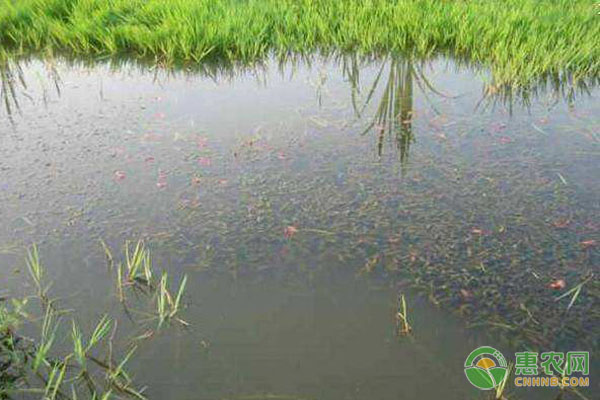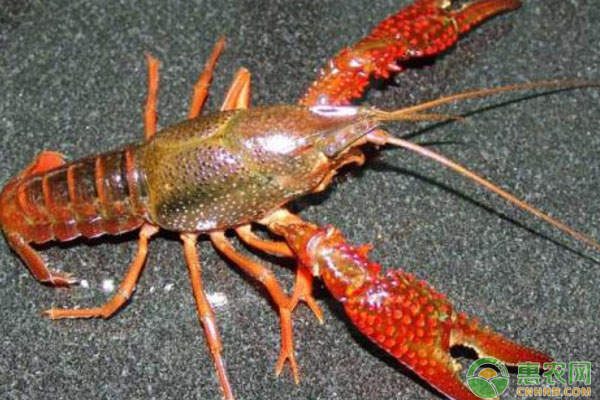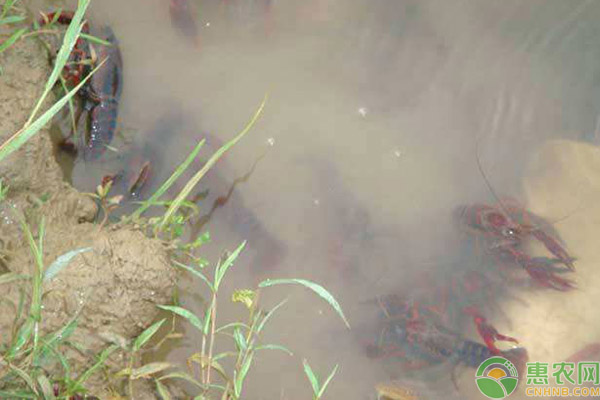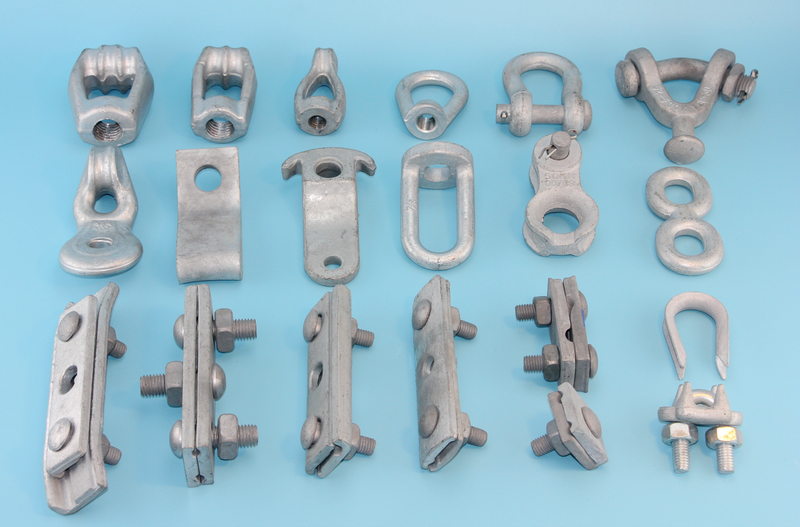High-efficiency culture technology of small lobster rice fields in Wuwei County
There are many people who breed crayfish, and the development of crayfish farming mode is also very fast. For example, the paddy crawfish breeding mode has become popular in many areas. In some areas, the efficient breeding mode of crayfish rice fields has also made many farmers The income has increased. Here are the specific practices and technical points of Wuwei County.

1. Rice field engineering
Choose rice fields with sufficient water source, no pollution, convenient water intake and drainage, and convenient transportation, with an area of ​​20 to 30 mu. The ditch is excavated 1 meter away from the field in the paddy field. The width of the ditch is 2 to 3 meters, the depth is 1.2 to 1.5 meters, and the slope ratio is (1 to 1.5):1. The width of the field surface should be no less than 1 meter and the height should not be less than 1.2 meters. The inside of the rice field is constructed of plastic film with an anti-fighting fence, which is 60-70 cm high and 10-20 cm at the bottom. The entrance and exit of the paddy field are built to prevent escape.
Second, crayfish culture management
Water planting
After the completion of the paddy field project, Elodea was transplanted in the surrounding circular ditch and the field in November. The plant spacing and row spacing were 1.5 meters, and each plant was 3 to 5 branches. At the end of June, the Hydrilla verticillata was planted in the ditch, with a plant at 1.5 m intervals, 5 to 6 per plant.
2. Seed placement
At the beginning of March, the local sturdy and vigorous crayfish seedlings were selected for stocking. The specifications were 5 g/only, and 40 kg per acre were stocked.

3. Feeding the bait
The bait is selected from full-price pellet feed (28% protein content) and soybeans. In March, the full-price pellet feed is the main source. From April to September, the full-price pellet feed and the soybeans are half each. Every day in the evening, in the field, ditch along the line to feed the bait, after 3 to 4 hours to check the remaining condition of the bait, determine the amount of feed. At the same time, according to the remaining situation of bait in different places, the distribution of crayfish in the field is estimated, and the key feeding area is selected. In addition, crayfish are concentrated in the clam period, rainy days and the use of quicklime or other disinfectants to reduce the amount of feed.
4. Water quality management
The depth of the surface of the field is kept at 30 to 40 cm. According to the water quality, the water exchange time and water exchange amount are determined to ensure that the water quality is “fat, live, tender and coolâ€. In March, change water once every 7 to 10 days, each time changing water 1/4. From April to June, crayfish eat more food, more metabolites, water quality is easy to deteriorate, change water once every 3 to 5 days, each time 1/3 of water. In addition, the water is changed once a day in a rainy day, and each time the water is changed 1/4. From June to October, the water level is determined according to the growth of the rice.
5. Water management
From April to May, Elodea grows prosperously and is prone to decay. It is necessary to remove the Elodea in order to increase the permeability of the water body and reduce the lack of oxygen in the bottom of the water body.
6. Disease prevention
Crayfish paddy field breeding diseases are mainly enteritis, rotten tail disease and viral white spot syndrome, which usually occur around May, with high incidence and death. In March, every half month, the water depth of 1 meter per acre is disinfected once with 5 kg of quicklime. From April to June, disinfection with a disinfectant or slaked lime per week is repeated once a week, and then the bottom is used to adsorb ammonia nitrogen and degrade nitrite to prevent crayfish disease.
7. Fishing and shrimp retention
Fishing began in late April, and large catches (30 g/s) remained small. In May, the catch was increased, and 20 g/s or more of all fish were listed, reducing the density of crayfish in the field and reducing the occurrence of diseases. From the end of May to the beginning of June, gradually reduce the water level in the field to the surface of the water, let the crayfish in the field slowly gather into the ditch, concentrate all fishing, except for the red shell shrimp market, the rest of the crayfish are put into the holding pool, holding The pool area accounts for 10% of the total paddy field.

8. Qingtang disinfection
In mid-May, the holding tank will be disinfected with 100 kg of dried limestone ponds per acre, and one week later, the water will be transplanted and transplanted. After the end of the fishing in the field in early June, the pond was disinfected with 100 kg of quicklime dry pond per acre. After one week, the water was drenched in the ditch, the water depth was about 80 cm, and the Hydrilla verticillata was transplanted.
Third, rice and shrimp symbiosis
The rice variety was selected as “Zhenjing 19†and planted (sowed) before June 20. 4 kg of rice seeds are used in the acre, and the strips are stripped, each strip is 4 meters wide, leaving a 1 meter wide gap between them. When the seedling height is about 10 cm, when the yellowing begins, the surface of the seedlings has been sun-dried. At this time, the surface of the seedlings is 1 cm deep, and a special fertilizer for rice is applied at the same time. After one week, gradually add water to the surface of the pond with a water depth of 15 to 20 cm. Prevention of rice leaf roller leafhopper before heading rice. After disinfecting the water in the ditch in the ditch, choose a healthy body with a complete appendage, weighing 20-30 g/green crust shrimp as a kind of shrimp, and catch it from the holding pond into the field, and stock 10 kg per mu of paddy field. When the surface water depth is 15-20 cm, 20 kg/min of juvenile shrimp of 20 g/min is stocked per acre of rice fields.
From August to September, observe the hole-piercing situation of crayfish in the ditch, indicating that most of the shrimps enter the hole, gradually reduce the water level in the field to the surface of the water, prepare the rice for harvesting, and start fishing for the second listed shrimp. . In mid-October, the rice was immediately added to the surface water depth of 20 to 30 cm after harvesting. The activity of juvenile shrimp in the field was observed at night, and the number of juvenile shrimp was less or not. Before the cold wave came, the surface water depth was increased to 40-50 cm. In the second year of March, fishing for shrimp and commercial shrimp began.
These are all the contents of today. I saw their case of paddy farming crayfish. What do you think of the farmers? Find out where you are missing?
Source: "Scientific Fish Farming"
Author: Chende Gui Yuan Shanyong
Deadend Hardware
Deadend hardware is a type of pole line hardware that is used to secure the end of a transmission or distribution line to a pole or tower. It is designed to withstand the tension and weight of the line and keep it securely in place.
Deadend hardware typically consists of a variety of components, including Oval Eye Nuts, Thimble Eyelets , Anchor Shackle, Guy clamps, bolts, nuts, washers, and insulators. These components work together to create a strong and durable connection between the line and the pole.
Yokelink supply a full line of deadend hardwares, , provide part number to get a quote on these products, leave your message, or send us an email to get answers for your questions or product you needed.

Oval Eyenut, Thimble Eyenut & Eyelets, Guy Clamp, Preformed Guy Grip,Cable Suspension Clamp
Ningbo Yokelink Machinery Co.,Limited , https://www.yokelink.com